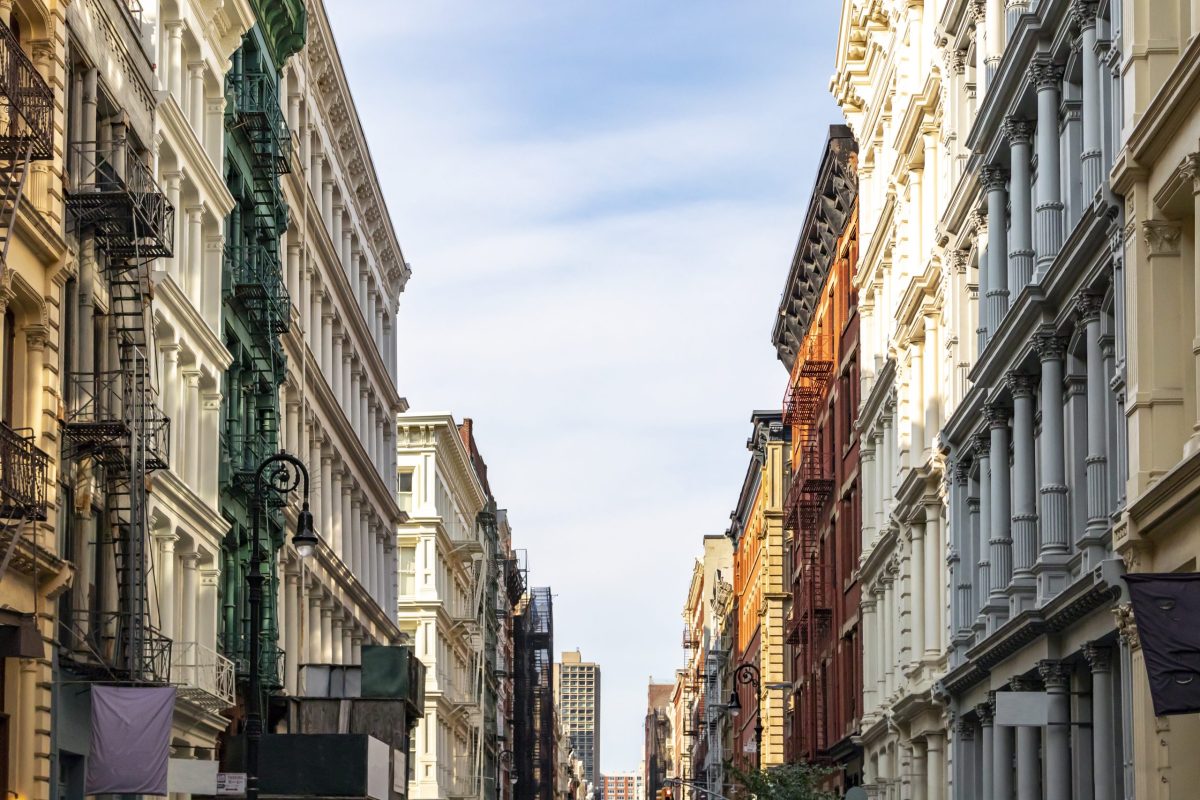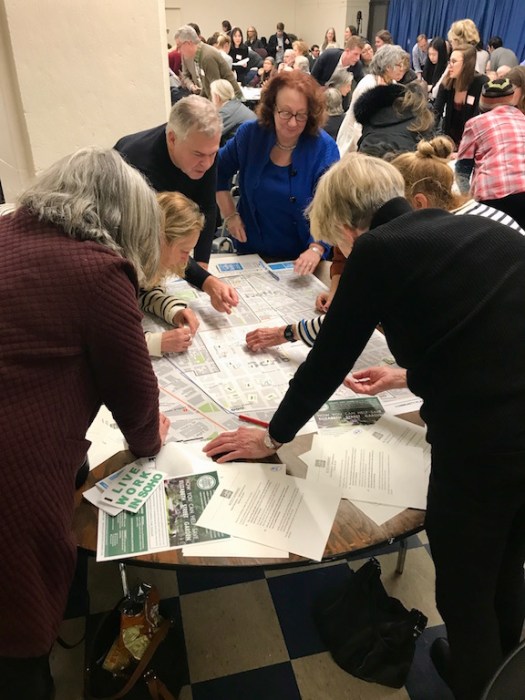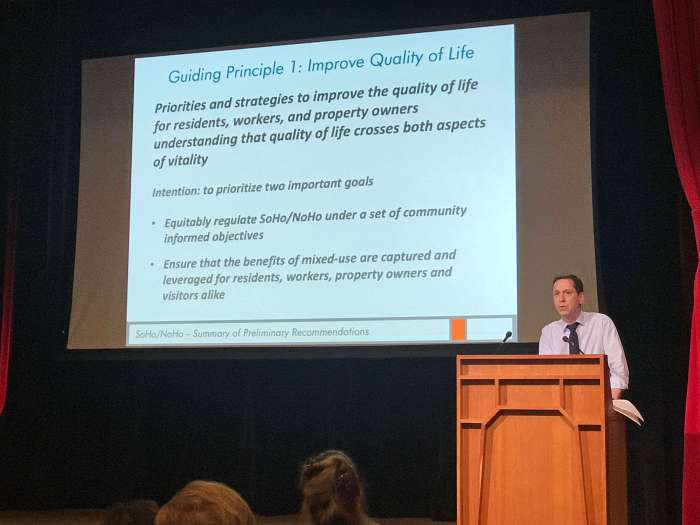Pandemic-era open space innovations like Open Streets and Open Restaurants transformed New York City’s public realm and offered a lifeline to communities and thousands of small businesses across the five boroughs.
Now, the question is how to take the lessons we’ve learned over the past 18 months and apply them to a more systematic, and long overdue, reappraisal of our public spaces with a focus on the myriad benefits associated with creating more pedestrian-friendly neighborhoods.
Our neighbors, especially in areas underserved with open space, urgently need higher-quality and more accessible streets, sidewalks, and outdoor spaces. In most places this will require repurposing available street space to support our city’s economic recovery, equity, and climate adaptation goals.
One such neighborhood, ripe for a public space re-envisioning process, is SoHo—where, for decades, throngs of visitors, workers, shoppers, and residents have jockeyed for footing on small sidewalks while the crush of vehicular traffic compromises Lower Manhattan’s quality of life.
So, where to go from here—how do we dream big and realize a new vision that will be both flexible and informed by diverse stakeholders? How do we implement a vision and push beyond a planning phase towards real action?
Last week, the SoHo Broadway Initiative, a neighborhood-focused business improvement district which represents residents and commercial stakeholders equally and which our two firms supported, released an exciting Framework + Vision Plan that seeks to answer these questions with recommendations for prioritizing what makes SoHo: all the people!
The plan posits that those investments in the public realm that prioritize the needs of people need not compromise a vibrant mixed-use neighborhood like SoHo, where people want to live and businesses can thrive. Rather, the plan offers a roadmap to create welcoming and dynamic public spaces that are true to the neighborhood’s historic character and well-integrated with its loft apartments, office spaces and retail establishments. It offers flexible physical design and policy proposals that can be adapted to the changing needs of the community and the city’s broader policy goals, like reducing carbon emissions and vehicular congestion.
We’ve witnessed a tremendous change in SoHo’s land use over the past 40 years but the streets and sidewalks have remained static and no longer accommodate neighborhood needs.
Based on thorough research, analysis and stakeholder discussions over the past year, the Framework and Vision Plan is the first step in a thoughtful process. Its values and objectives are meant to ignite conversations that lead to the implementation of bold ideas to be advanced by the City in partnership with the community.
The plan’s public space recommendations emphasize expanding sidewalk space and pedestrianizing select streets, reducing auto traffic, improving waste management, celebrating the neighborhood’s history and architecture, bringing increased amenities to side streets, providing spaces for community gathering, and creating a bike-friendly environment and a greener central Broadway corridor.
These ideas aren’t just about making life better for the people that live, work, and walk around in SoHo, but rethinking how our city leverages underused street space to streamline commercial and municipal services, like freight deliveries, building service operations, and waste management.
For businesses, creating a comfortable and compelling space for workers and visitors will support opening of new retailers and attract office tenants who will be compelled by a dynamic, safe public realm and continue what will likely be a long recovery from the pandemic.
If these important investments in and changes to the public realm are not made, residents, businesses and visitors can easily go elsewhere when looking to spend time (and their dollars) in the city, or to other leading cities – like London or Paris – who already have bold post-COVID public realm transformations underway.
What the Initiative is working to realize on Broadway in SoHo shines a light on the opportunities rife across the boroughs to build on the work so many communities are already doing; efforts to effectively reclaim their public space and reframe it to better serve the public good.
Its ideas speak to the work necessary not just in SoHo, but communities across the city where mobility infrastructure still privileges auto traffic despite the crippling congestion and excessive carbon emissions we know result from that approach.
We must work together toward a new neighborhood framework that prioritizes people and communities.
Now it is up to our elected officials to work with community leaders and members to execute the policy actions necessary to realize a healthier, more sustainable, and inclusive vision for streets and public space, not just for SoHo but for neighborhoods across the city.
Rebecca Karp is CEO and Managing Principal of Karp Strategies, an NYC-based urban planning firm. Mike Lydon is Principal of the design and transportation planning practice Street Plans.

































